One mole of helium gas follows the cycle 1-2-3-1 shown in the diagram. During process 3-1, the internal energy (U) of the gas depends on its volume (V) as U=bV2, where b is a positive constant. If gas releases the amount of heat Q1 during process 3-1 and gas absorbs th amount of heat Q2 during process 1→2→3 them:
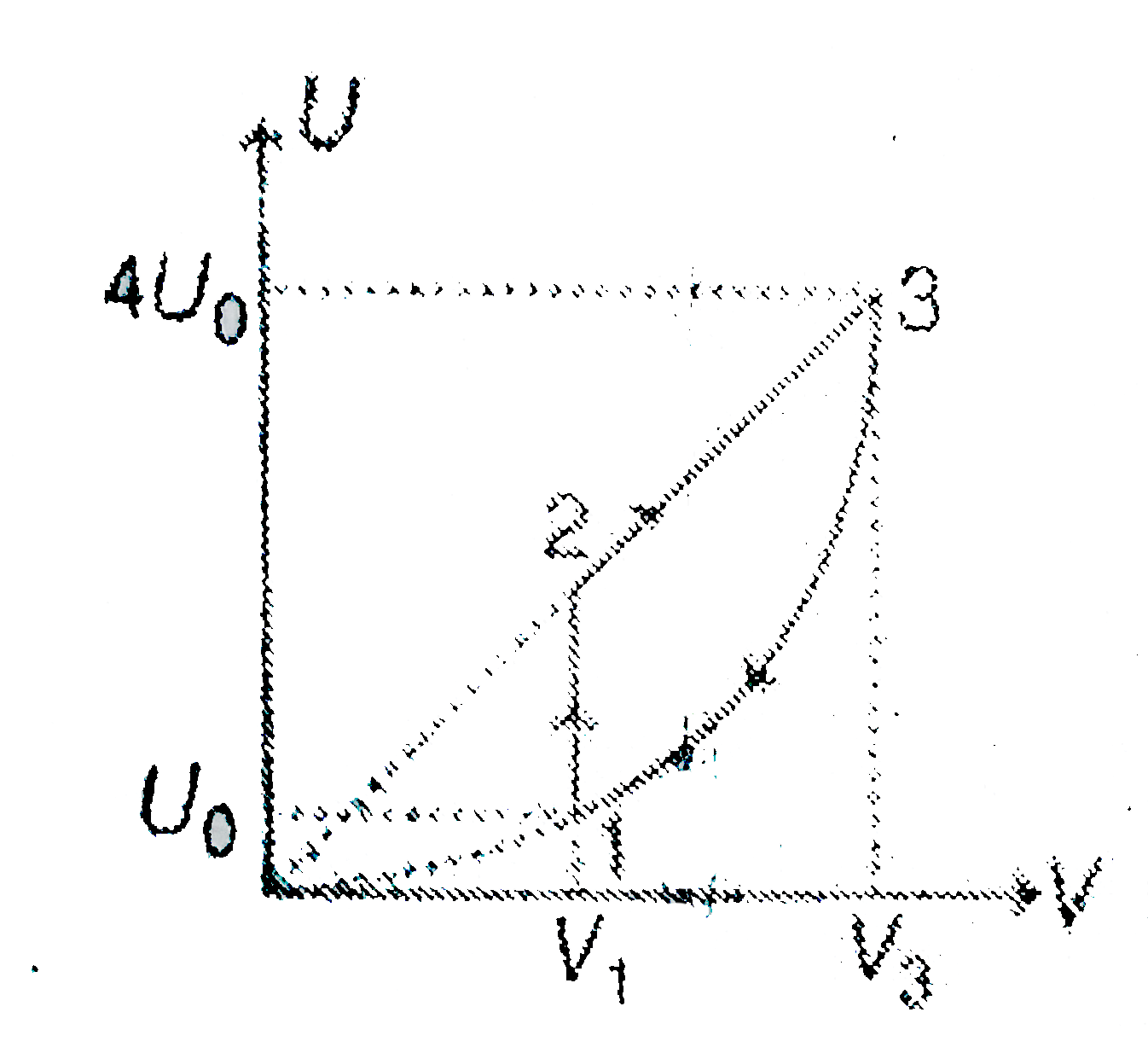
The value of O1/Q2 is
89
98
1213
1312
The correct Answer is:C
Step by step video, text & image solution for One mole of helium gas follows the cycle 1-2-3-1 shown in the diagram. During process 3-1, the internal energy (U) of the gas depends on its volume (V) as U=bV^(2), where b is a positive constant. If gas releases the amount of heat Q_(1) during process 3-1 and gas absorbs th amount of heat Q_(2) during process 1rarr2rarr3 them: The value of O_(1)//Q_(2) is by Physics experts to help you in doubts & scoring excellent marks in Class 11 exams.
Updated on:21/07/2023Topper's Solved these Questions
Similar Questions
Two moles of an ideal monoatomic gas is taken through a cycle ABCA as shown in the p - T diagram. During the process AB, the pressure and temperature of the gas vary such that pT = constant. If T1=300K and the amount of heat released by the gas during the process AB is Q=−xR, then the value of x is
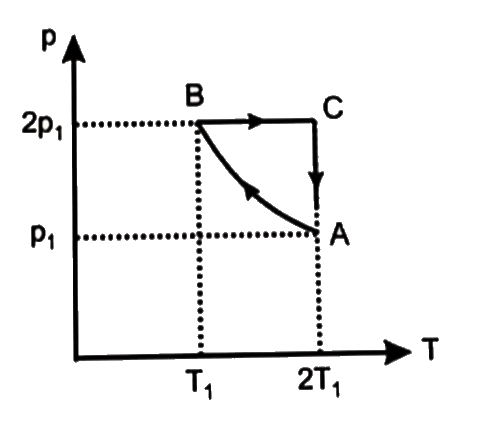
View SolutionOne mole of an ideal gas at initial temperature T, undergoes a quasi-static process during which the volume V is doubled. During the process the internal energy U obeys the equation U=aV(3) where a is a constant. The work done during this process is-
View Solution
Knowledge Check
One mole of helium gas follows the cycle 1-2-3-1 shown in the diagram. During process 3-1, the internal energy (U) of the gas depends on its volume (V) as U=bV2, where b is a positive constant. If gas releases the amount of heat Q1 during process 3-1 and gas absorbs th amount of heat Q2 during process 1→2→3 them:
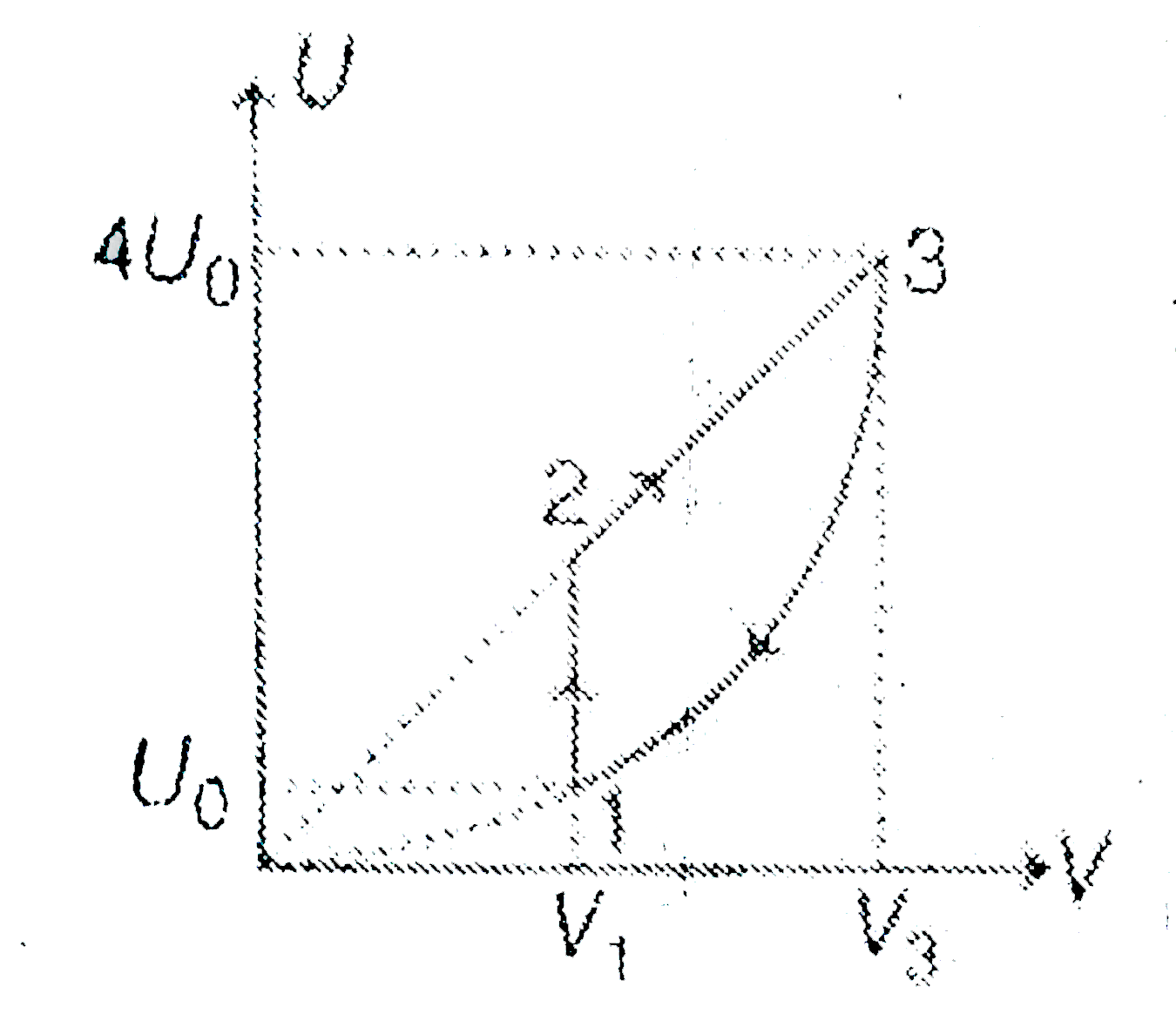
V3V1 isA43B21C32D41One mole of helium gas follow cycle 1−2−3−1 shown in the diagram. During process 3−1, the internal energy (U) of the gas depends on its volume (V) as U=bV2, where b is a positive constant. If gas releases the amount of heat Q during process 3−1 and gas absorbs the amount of heat Q2 during process 1→2→3.
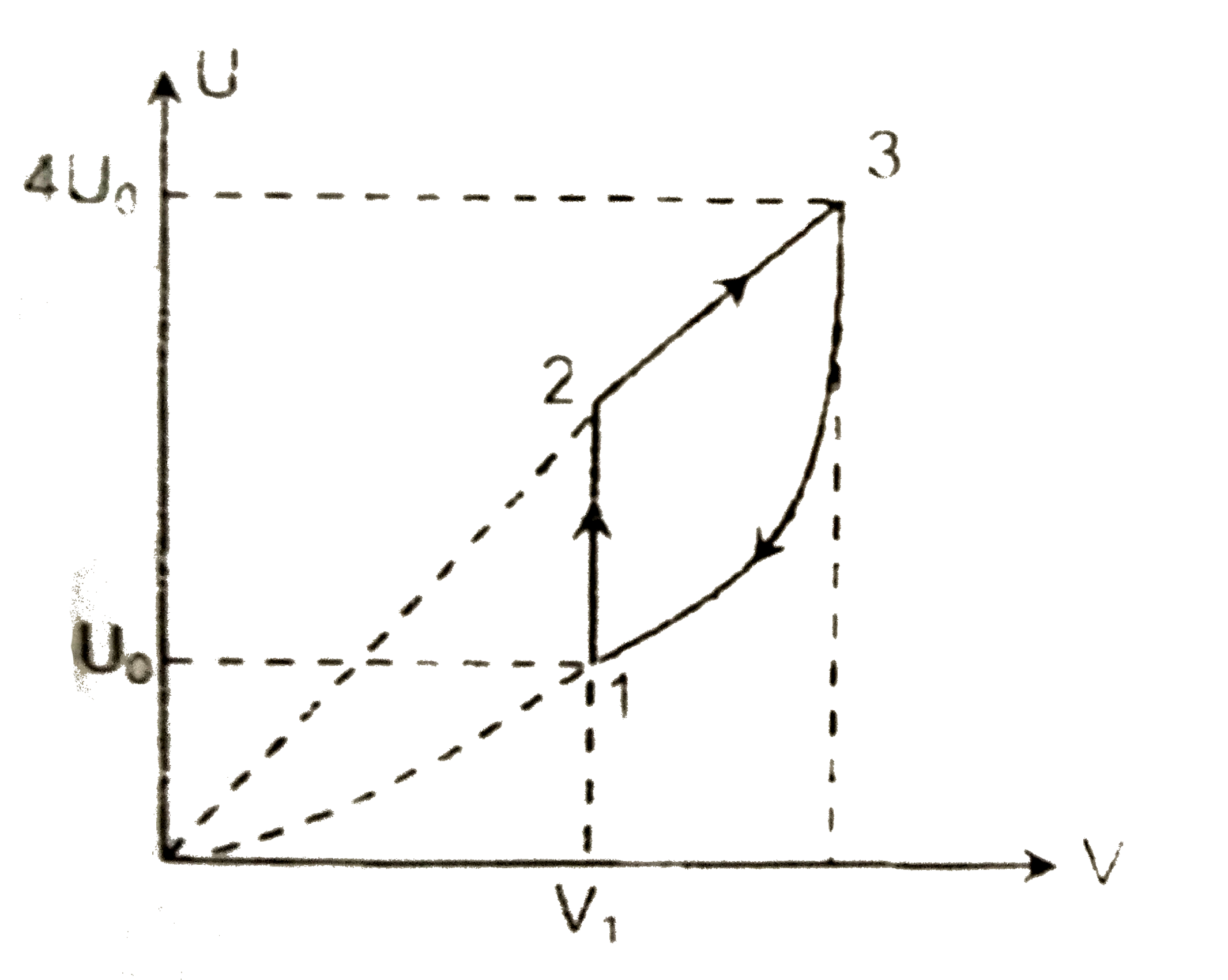
The value of ratio of volume of gas in state −3(V3) to that of gas in state −1(V1) is:A12B21C13Dnone of theseThe temperature (T) of one mole of an ideal gas varies with its volume (V) as T=−αV3+βV2, where αandβ are positive constants. The maximum pressure of gas during this process is
Aαβ2RBβ2R4αC(α+β)R2β2Dα2R2β
A heat engine carries one mole of an ideal mono-atomic gas around the cycle as shown in the figure below. Process 1→2 takes place at constant volume, process 2→3 is adiabatic and process 3→1 takes place at constant pressure. Then the amount of heat added in the process 1→2 is
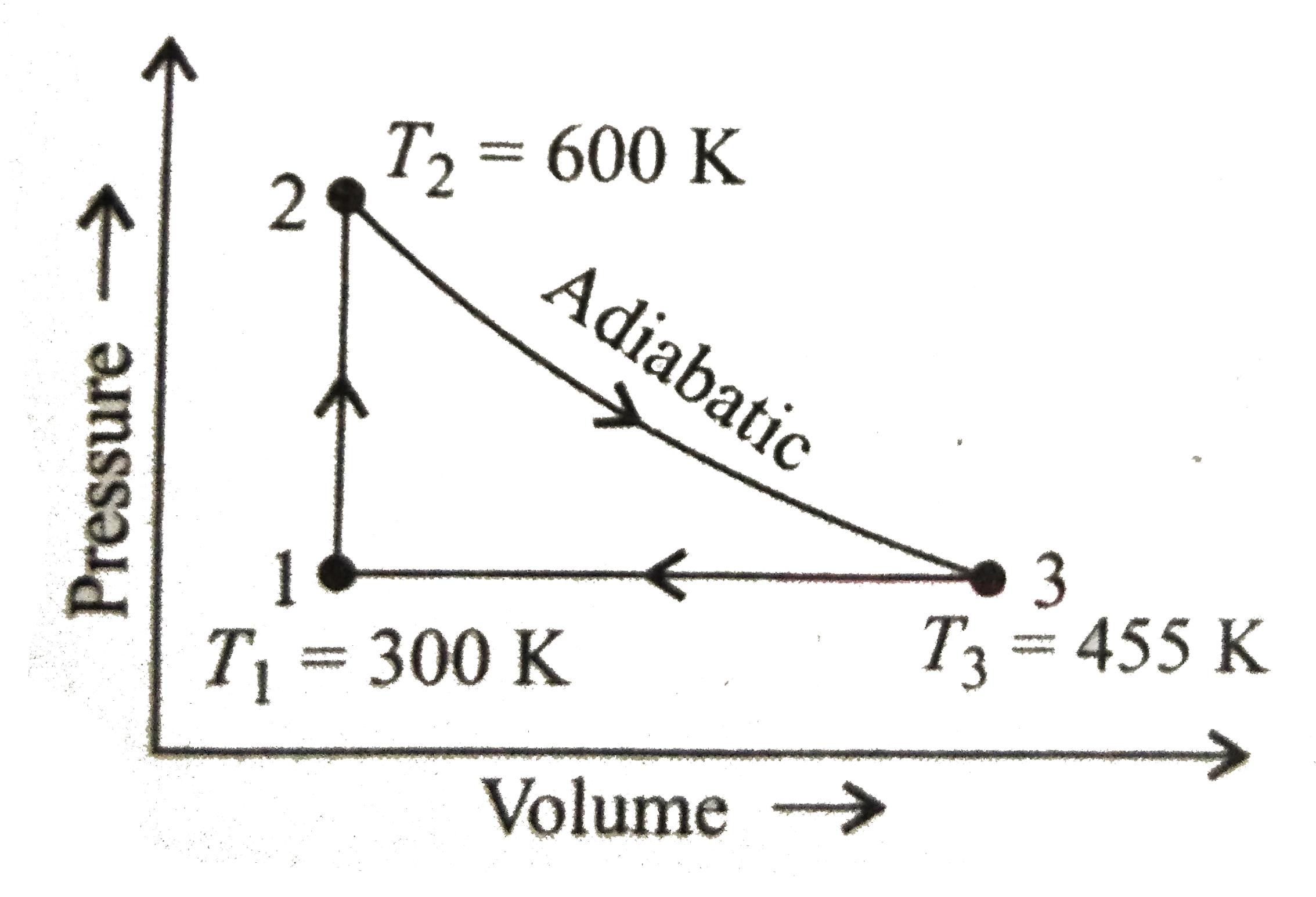
View SolutionTwo moles of an ideal gas are undergone a cyclic process 1-2-3-1. If net heat exchange in the process is 300J, the work done by the gas in the process 2-3 is
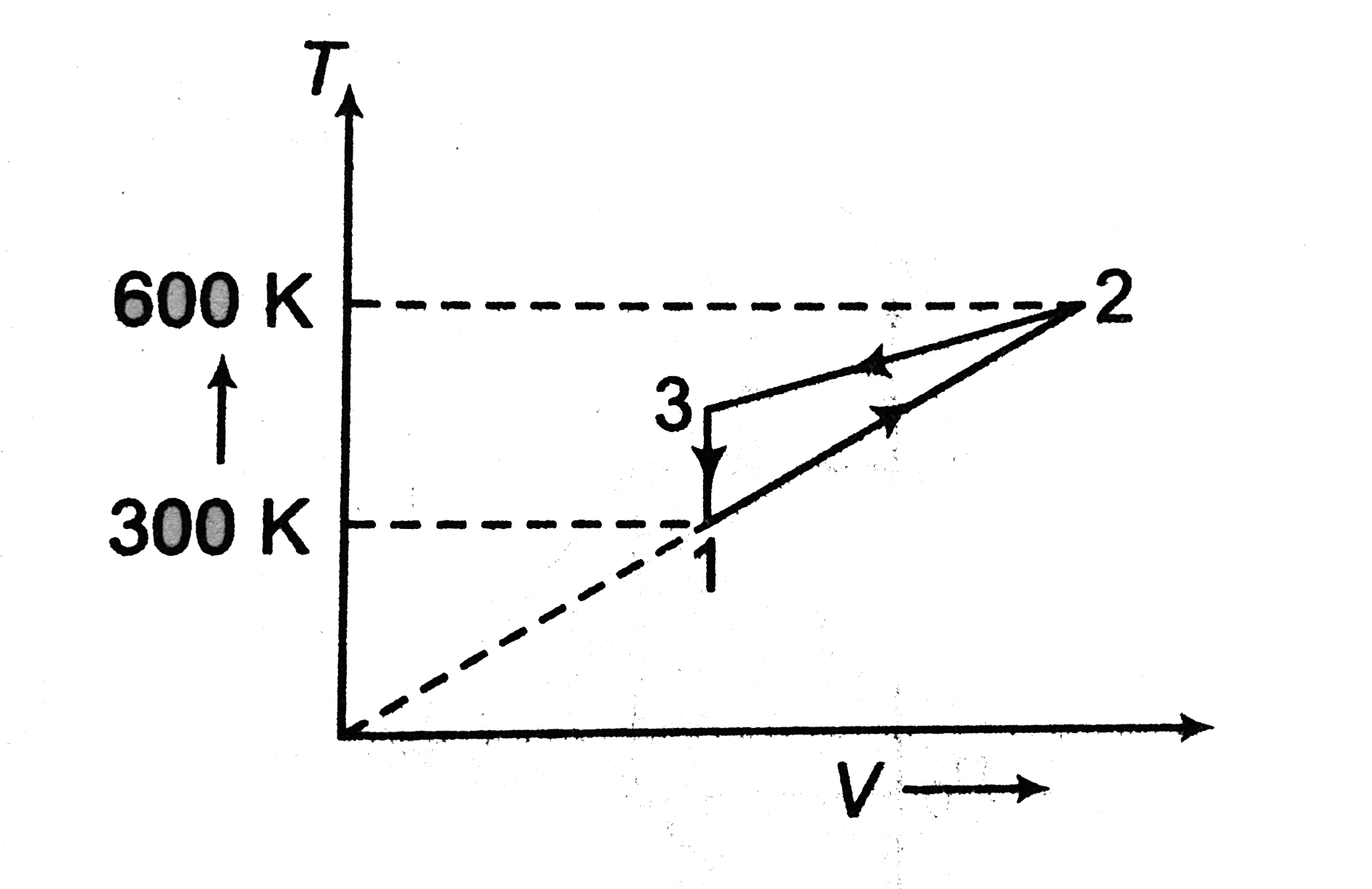
View SolutionDuring the adiabatic expansion of 2 moles of a gas, the internal energy of the gas is found to decrease by 2 joules , the work done during the process on the gas will be equal to
View SolutionThe internal energy of a gas is given by U = 3 pV. It expands from V0 to 2V0 against a constant pressure p0.
The heat absorbed by the gas in the process is
View SolutionThe P−V diagram of 2 gm of helium gas for a certain process A→B is shown in the figure. What is the heat given to the gas during the process A→B?
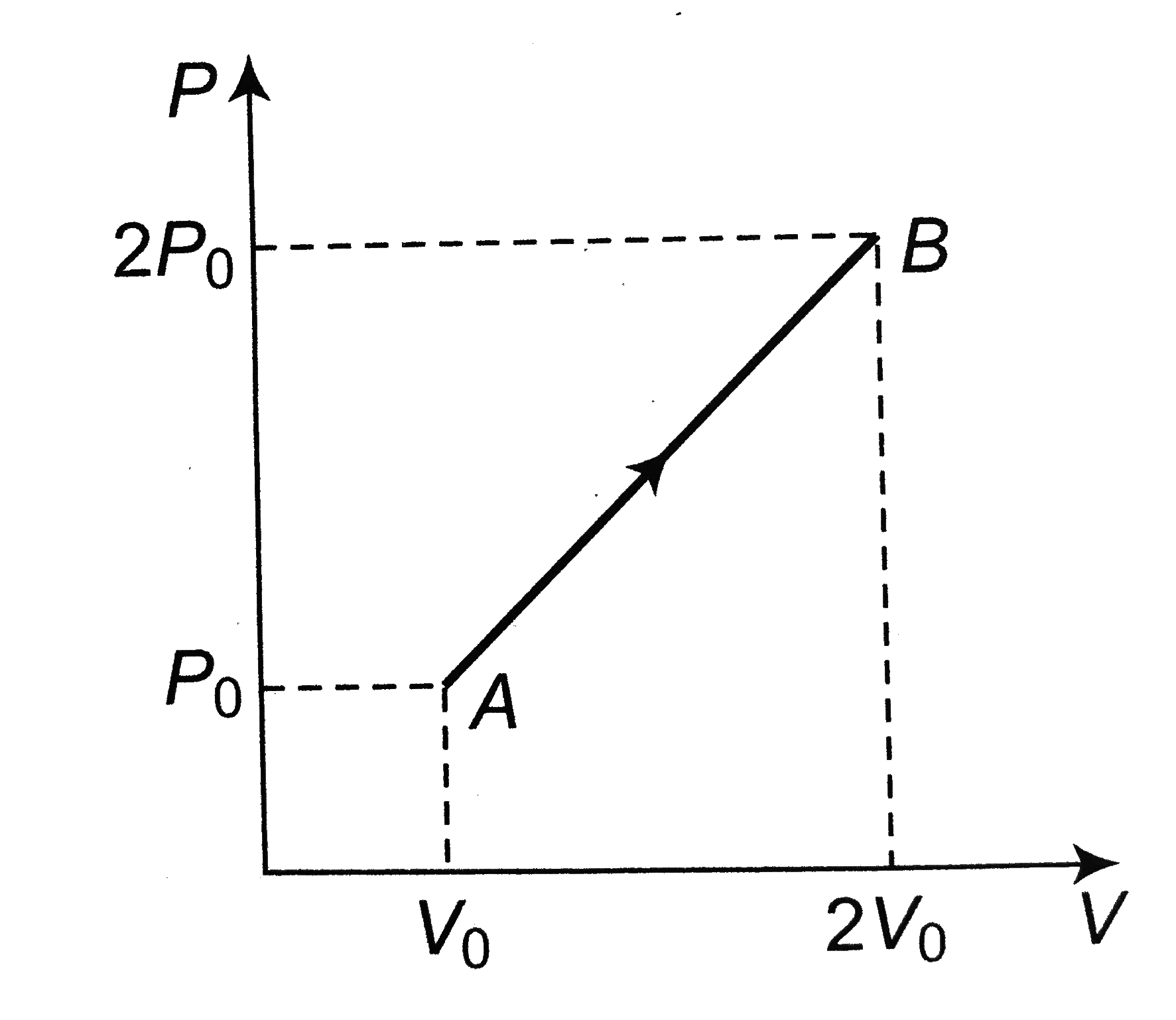
View Solution
